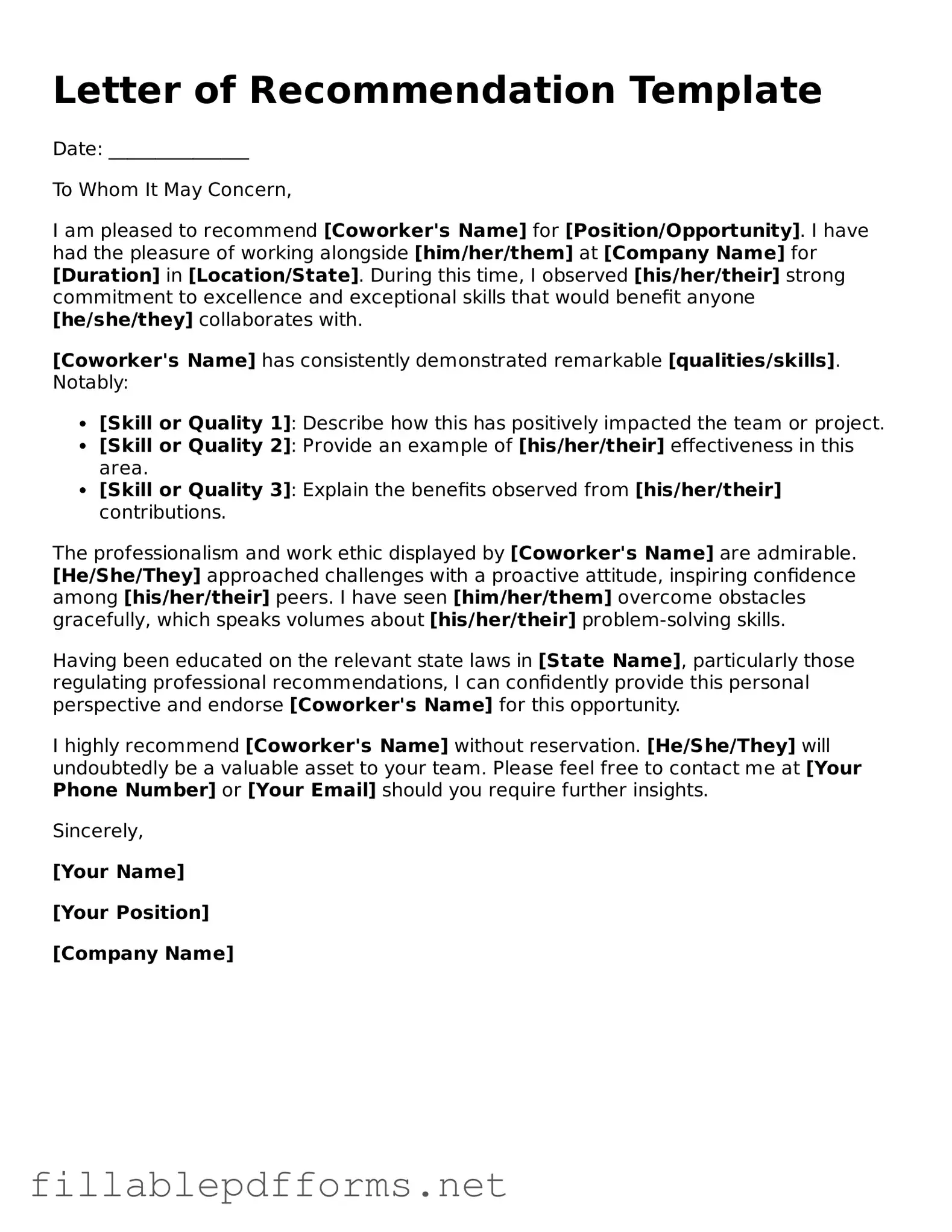Blank Letter of Recommendation for Coworker Template
The Letter of Recommendation for Coworker form is a document used to endorse a colleague's skills, work ethic, and character. This form serves as a valuable tool for individuals seeking new job opportunities or promotions. By providing a thoughtful recommendation, you can help your coworker stand out in a competitive job market.
Launch Editor Here
